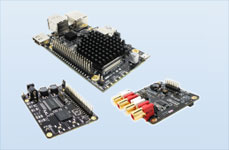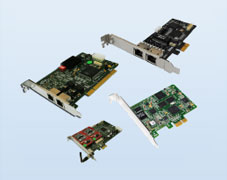Technology
We develop and manufacture Voice-over-IP (VoIP) products based on open standards like Asterisk (SIP and RTP) for communications. Our products can be operated with a large number of compatible and other vendor products that support the SIP (Session Initiation Protocol). For enterprise communication systems needs, we give lot of choice for our customers.
Our products are suitable for use in all business environments ranging from home offices to small- and medium-sized enterprises and large corporations.
Allo.com develops and produces VoIP products for business communication which are based on the open standard SIP (Session Initiation Protocol). Quality, security, interoperability, design, and functionalities that are entirely tailored to modern business communication needs.
Volp : (Voice Over Internet Protocol)
VoIP is a set of technologies that enable voice calls to be carried over the Internet (or other networks designed for data), rather than the traditional telephone landline system the Public Switched Telephone Network, or PSTN.
VoIP works by taking analog signals and converting them to digital data that can be sent over a network (Internet in most cases), but also any private network. It requires that you have a broadband network connection, the necessary items to create that broadband connection (a broadband modem, your computer, a router, etc.) and a device to convert the data. Voip is an interesting technology that allows a lot of possibilities, giving business multiple lines using their broadband connection.
There are different "flavors" of VoIP service in common use today:
ATA
The simplest and most common way is through the use of a device called an ATA (analog telephone adaptor). The ATA allows you to connect a standard phone to your Internet connection for use with VoIP.
IP Phones
These specialized phones look just like normal phones with a handset, cradle and buttons. But instead of having the standard RJ-11 phone connectors, IP phones have an RJ-45 Ethernet connector. IP phones connect directly to your router and have all the hardware and software necessary right onboard to handle the IP call. Wi-Fi phones allow subscribing callers to make VoIP calls from any Wi-Fi hot spot.
PBX
A hybrid TDM/IP PBX has both TDM and IP components co-existing, side by side.The TDM component comprises TDM line and trunk cards and ports and a TDM bus.The IP component comprises Ethernet ports, an Ethernet switch, and IP trunk ports. A gateway interconnects the TDM and IP components, both of which are under the control of a telephony server running a operating system (OS). It supports for the handling and transmission of voice over traditional telephony interfaces including analog lines, ISDN-BRI lines and digital T1/E1 trunks.
SIP (Session Initiation Protocol):
The Session Initiation Protocol (SIP) is a signalling protocol used for establishing two-way telephone call or a collaborative multi-media conference session in an IP network SIP is an RFC standard (RFC 3261) from the Internet Engineering Task Force (IETF). SIP is a request-response protocol that closely resembles two other Internet protocols, HTTP and SMTP. In order to provide telephony services there is a need for a number of different standards and protocols to come together - specifically to ensure transport of media (RTP), to authenticate users, to provide directory services , to be able to guarantee voice quality and to inter-work with today's telephone network.
SIP is an important protocol that is becoming widely deployed. SIP is a catalytic protocol that delivers key signaling elements, which can turn a voice over IP network into a true IP communications network - a network capable of delivering next generation converged services. SIP is powerful, and yet simple.
SDP (Session Description Protocol) – SDP is the method by which sessions are described: Session Description Protocol (SDP) is an application layer protocol used to define delivered audio and video format between nodes this information must be communicated between the two end parties at the beginning of the session. SDP is transported along with the SIP packet body. SDP includes –Session name and purpose –Time(s) the session is active –The media comprising the session –Information to receive those media (addresses, ports, formats and so on)
RTP/RTCP
The real-time transport protocol (RTP) provides end-to-end delivery services for data with real-time characteristics, such as interactive audio and video or simulation data, over network. Applications typically run RTP on top of UDP to make use of its multiplexing and checksum services; both protocols contribute parts of the transport protocol functionality. RTP itself does not provide any mechanism to ensure timely delivery or provide other quality-of-service guarantees, but relies on lower-layer services to do so. It does not guarantee delivery or prevent out-of-order delivery. The sequence numbers included in RTP allow the receiver to reconstruct the sender's packet sequence
The Real Time Transport Control Protocol (RTP control protocol or RTCP) is based on the periodic transmission of control packets to all participants in the session, using the same distribution mechanism as the data packets. RTCP provides feedback on the quality of the data distribution. RTCP carries a persistent transport-level identifier for an RTP source called the canonical name or CNAME. An OPTIONAL function is to convey minimal session control information. Transmission of RTCP MAY be controlled where feedback is not possible.
Build Yours Today!
Copyright © Allo.com - All Rights Reserved





